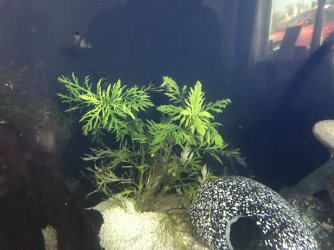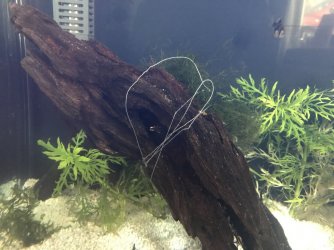Hello. So my tank is a 55 gal and has recently just had fish put in after cycling. My PH is about 5.5. 26 Degrees C. Slightly Planted aquarium. 5 tiger barbs and a little hero of a platy. I am not expecting any issues with ammonia but good to ask the questions now rather than in panic. Not stocking more until I understand questions I have.
I was wondering. If all of a sudden i have a ammonia spike for some unknown reason. Will this just convert automatically to Ammonium and not be toxic to my fish as my PH is low? Obviously the test kits show both at the same time so its hard to tell which. Although the research I have done says I don't have to worry about ammonia in my tank? So lets say the ammonia alert starts blinking, is that ammonium and no problem or should I still panic? Are there any test kits that distinguish between ammonia and ammonium?
Second question, the plants seem to be slightly pale green and I havent noticed any grown this week. Are they dying and what can I do about it? They get average natural light through the day and the aquarium light is set to come on for 4 hours each evening. OR is it just the bedding in phase for them and they will establish soon?
Main question though is the ammonium.
Thanks
BEn
I was wondering. If all of a sudden i have a ammonia spike for some unknown reason. Will this just convert automatically to Ammonium and not be toxic to my fish as my PH is low? Obviously the test kits show both at the same time so its hard to tell which. Although the research I have done says I don't have to worry about ammonia in my tank? So lets say the ammonia alert starts blinking, is that ammonium and no problem or should I still panic? Are there any test kits that distinguish between ammonia and ammonium?
Second question, the plants seem to be slightly pale green and I havent noticed any grown this week. Are they dying and what can I do about it? They get average natural light through the day and the aquarium light is set to come on for 4 hours each evening. OR is it just the bedding in phase for them and they will establish soon?
Main question though is the ammonium.
Thanks
BEn




